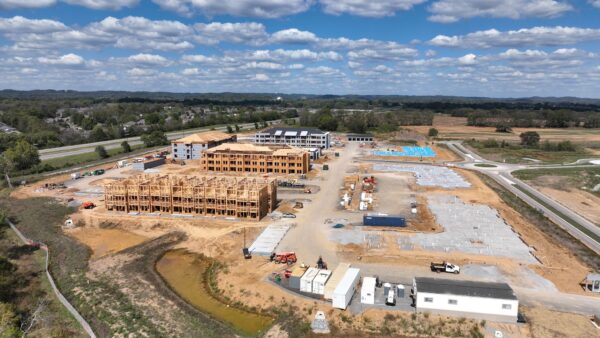Research into why a Peruvian butterfly is such an attractive shade of blue may provide the clue to a new generation of super efficient photovoltaic panels.
Scientists at the Australian National University (ANU) have discovered that the 150mm-wide wings of Morpho Didius are covered in cone-shaped structures that scatter light to create a vivid shade of iridescent blue. Â
The butterfly uses the striking colour on the top of its wings to improve its chances of mating (the underside is dull brown and covered in 14 fake eyes to put off predators). Humans could use the nano-cones to control the sunlight striking the surface of a solar panel.
Niraj Lal, the lead researchers at ANU’s School of Engineering, said: “There’s a whole bunch of potential applications using our light-control technique, including next-generation solar cell, architectural and stealth technologies.”
Lal added that the aim was to absorb the blue, green and ultraviolet wavelengths in the perovskite layer of a “tandem” design of solar cell, whereas the longer red, orange and yellow light would be directed to the silicon layer.
The race to the limit
Using our approach, a window could be designed to be transparent to some colours, non-see through and matt textured for others – so there are very cool potential applications in architecture– Niraj Lal
Perovskite is a mineral that contains calcium titanium oxide; in 2009 it was discovered that it has photovoltaic properties. The development of the most efficient possible perovskite solar cell is one of the main prizes in the solar industry.
Researchers at ANU recently produced a cell with an efficiency of 26.4% using stacked configuration of perovskite and silicon, a figure that was beaten in March by Japanese solar panel maker Kaneka Corporation which achieved 26.6%.
The greatest theoretical efficiency of a solar panel is 33% – this is the Shockley-Queisser limit, which was discovered in 1961.

Eyecatching: the Morpho Didius uses nano-cones to achieve this shade of shimmering blue (Lee Roberts)
The greatest practical efficiency is thought to be 29%, and the photovoltaic industry is racing to produce panels that get as close as possible to it. The problem is that the degree of effort and innovation required for each additional fraction of a percentage point increases as the limit approaches.
The scientists at Kaneka estimate that the ability to control the way light strikes the surface of a PV cell would add one point to its efficiency. This may not seem like a large amount in absolute terms, but it would be a significant step towards producing the perfect solar panel.
The advantage of scattering light at the surface of the cell is that each photon hits the surface at a shallow angle and moves sideways through the PV layer, thereby increasing the length of its path, and making it more likely that it will interact with an electron.
Dimmable windows
Lal said the ability to control light could have other applications besides PV manufacturing. For example, it could be used to make opaque objects appear to disappear when lit by certain wavelengths. It could also be used to modify the transparency of glass, which may allow the production of windows that could be “dimmed”.
“Using our approach, a window could be designed to be transparent to some colours, non-see through and matt textured for others – so there are very cool potential applications in architecture,” he said.
One factor that may help the technology to reach market is that it is not inherently expensive: “These intricate nanostructures grow and assemble themselves – it’s not by precise control with a tiny laser or electrons,” he added.
The research paper is published in ACS Photonics, with co-authors Kevin Le, Andrew Thomson, Maureen Brauers, Tom White and Kylie Catchpole.
Top image: Niraj Lal giving a TED talk on sunlight and butterflies (YouTube)
Comments
Comments are closed.







This is all fascinating and will have a useful (but limited) life. Useful in orbiting space stations, satellites, and in the middle of the Sahara until fusion is avail on line. I believe that all the funding that has gone into the solar was to deplete the funding for fusion which will have a overall phase-shift in productivity with it’s ability for transmutation of atomic structures. Solar will never come close to that. Focusing on solar is kinda like introducing lagos to replace erector sets – going for the least common denominator of young minds.